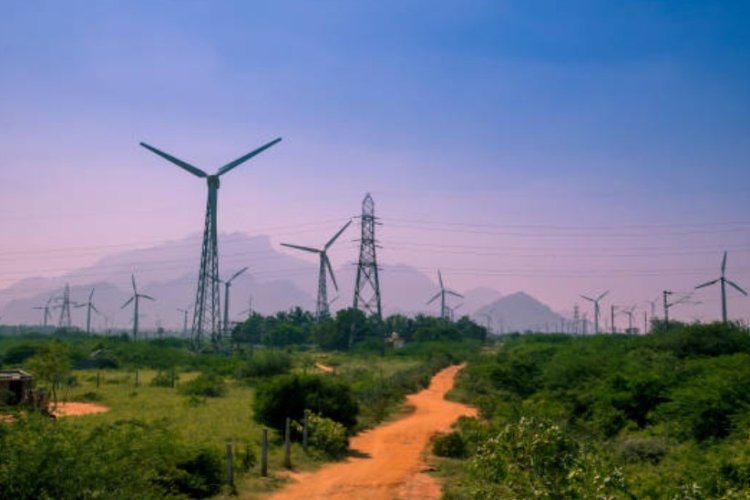
India’s energy story presents a striking paradox. The country has made impressive strides in renewables, yet its dependence on imported fossil fuels remains stubbornly high. The government’s twin objectives of energy security and decarbonisation now pull in different directions. On one side lies the compulsion to ensure steady oil and gas supplies; on the other, the urgency to build a cleaner and more resilient energy system. Geopolitical shocks, policy inconsistency, and structural weaknesses have brought this tension to the fore. The choices India makes over the next decade will determine whether energy becomes a pillar of national strength or a continuing source of vulnerability.
India’s economic growth has been accompanied by an overwhelming dependence on imported fossil fuels — the country meets nearly 80% of its crude oil needs from abroad. Domestic production has fallen sharply, from 767,000 barrels per day in 2011 to about 565,000 barrels per day today, leaving local reserves sufficient for barely nine days of consumption. This dependence makes India acutely vulnerable to supply disruptions at global chokepoints such as the Strait of Hormuz and the Suez Canal.
READ | Bank grievance redressal system in for an overhaul
Geopolitical shocks and domestic headwinds
The Russia-Ukraine war underlined India’s exposure when global LNG prices spiked and freight routes faced repeated interruptions. Limited storage capacity, stagnant domestic production, and fiscal constraints magnified the shock. Policy efforts to liberalise upstream oil and gas exploration, attract global majors, and modernise licensing terms are therefore both necessary and overdue.
Yet, the sector faces new hurdles at home. The government’s 2024 decision to raise the GST on exploration and production services from 12% to 18% has squeezed operators already coping with weak oil prices and heavy fiscal burdens. Analysts warn that some assets may now be uneconomical. Beyond taxation, chronic regulatory uncertainty and contractual rigidity continue to deter investors. Domestic gas production also declined by 3% in FY24 to 28.7 billion cubic metres, further straining the energy balance.
Despite these setbacks, India remains committed to making natural gas a bridge fuel in its energy transition. The government’s goal is to raise gas’s share in the primary energy mix from 6% to 15% by 2030. Meeting that target would require quadrupling LNG imports and rapidly expanding regasification and pipeline infrastructure. However, India still trails far behind global competitors in downstream capacity and supply reliability. Without faster project execution and better incentives for private players, the gas vision risks remaining aspirational.
Clean energy gains and bottlenecks
India’s clean-energy momentum is undeniable. As of 2025, non-fossil capacity has exceeded 217 GW, and the government’s target of sourcing 50% of installed capacity from renewables by 2030 now appears within reach. Massive expansions in solar and wind, along with new policy thrusts on green hydrogen and battery storage, are driving this optimism.
But the sector’s foundations remain fragile. The country imports almost all of its lithium, cobalt, and nickel — critical minerals for batteries and electrolysers — making supply-chain diversification and domestic processing a strategic priority. Meanwhile, financially stressed state electricity distribution companies (DISCOMs) delay payments to generators, weakening investor confidence and slowing grid modernisation.
Implementation delays and undersubscribed auctions add to the drag. In 2024, more than 70 GW of renewable tenders were issued, but around 8.5 GW went undersubscribed due to cost and policy uncertainties. Transmission congestion and land-acquisition hurdles further restrict the pace of renewable integration into the grid.
Energy security: The coal conundrum
Even as India’s renewable capacity expands, coal continues to dominate generation, supplying about 70% of electricity. The government plans to add another 80–90 GW of coal capacity by 2032 to meet peak demand — a pragmatic but environmentally costly decision. India’s energy strategy is thus evolving into a dual track: scaling up renewables while maintaining coal for baseload reliability.
For India to meet its climate commitments, coal plants must gradually be retrofitted or phased out. Options include carbon-capture technologies, biomass co-firing, and accelerated deployment of hybrid systems that combine solar and battery storage. Analysts estimate that to phase out coal by 2040, the cost of solar-plus-storage systems must fall by roughly 6% annually over the next two decades — a daunting but achievable target given global technology trends.
Reforming energy governance
India’s energy challenge is not merely technical; it is institutional and fiscal. Fragmented policymaking between ministries, inconsistent tax regimes, and frequent shifts in tariff and incentive structures have created policy incoherence. The GST hike on exploration services exemplifies the tension between short-term revenue goals and long-term energy security. For global capital to flow into Indian energy, investors need predictable taxation, transparent regulation, and credible enforcement.
As India looks to its centennial year of independence in 2047, energy must shift from being a strategic vulnerability to a national strength. Reducing import dependence, stabilising the power grid, and creating robust supply chains for clean technologies are essential to achieving the “Viksit Bharat” vision.
India’s path to energy security will therefore depend on disciplined execution — liberalising fossil policies without locking into them, investing aggressively in renewables without undermining fiscal prudence, and ensuring that institutional reforms sustain investor confidence. Only then can energy become the true enabler of inclusive, resilient, and sustainable growth.
